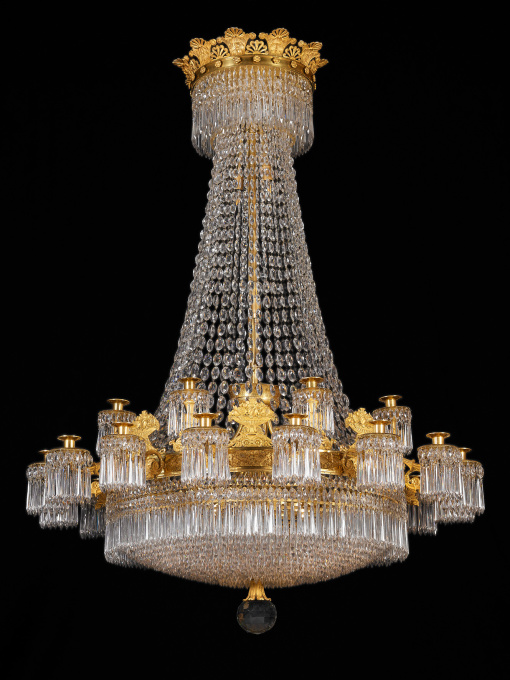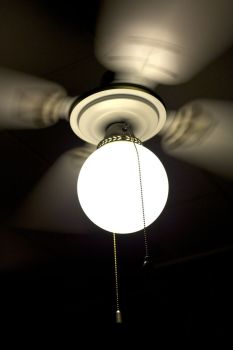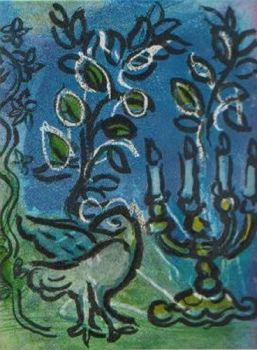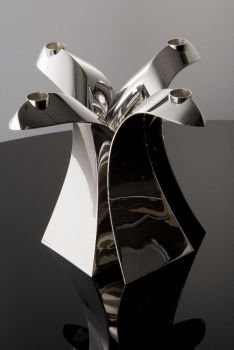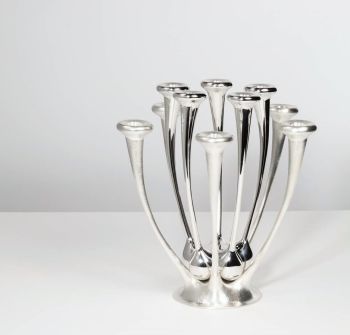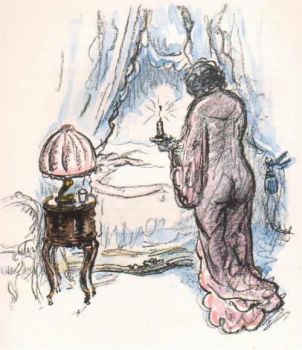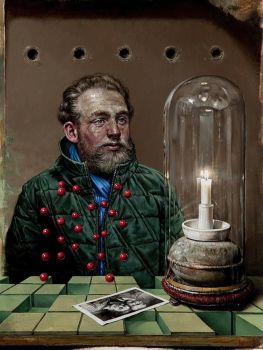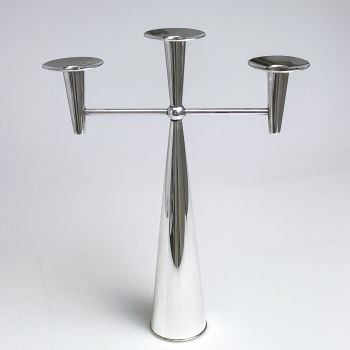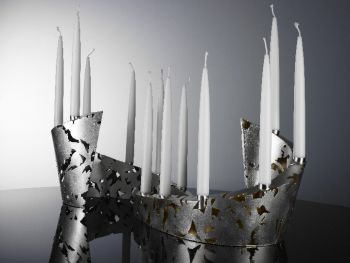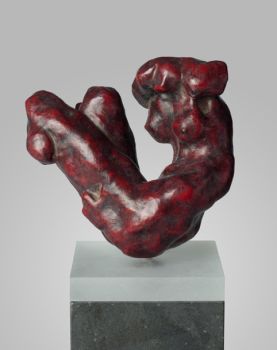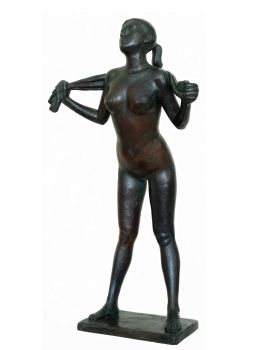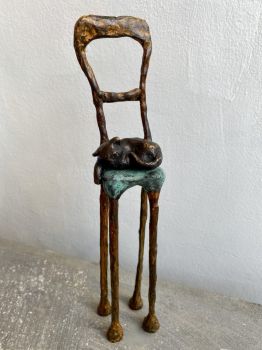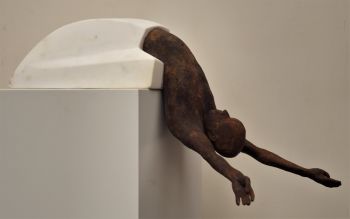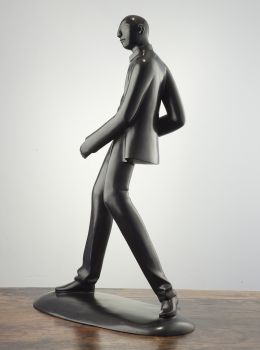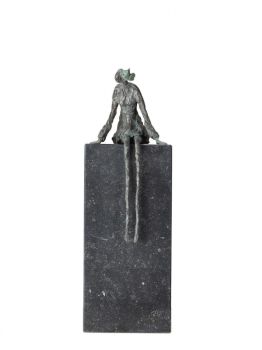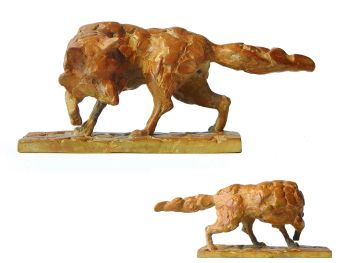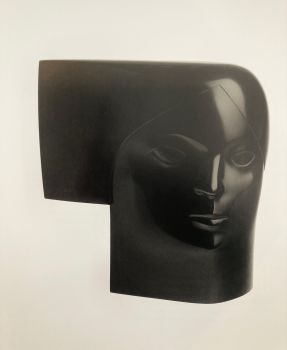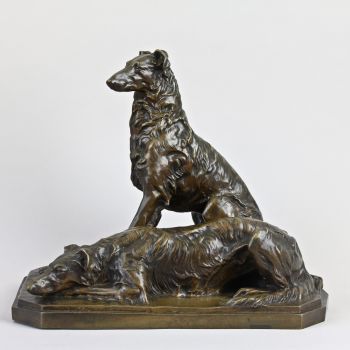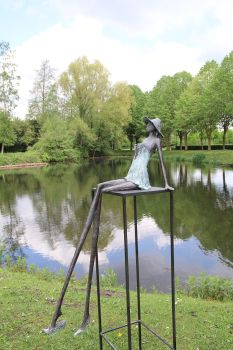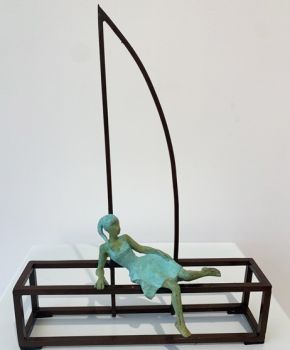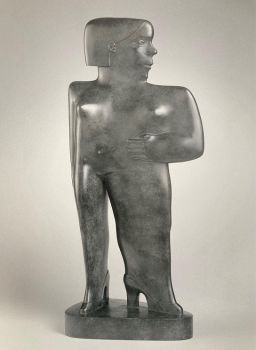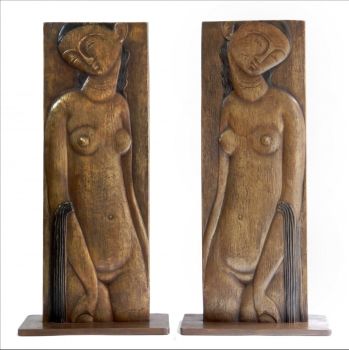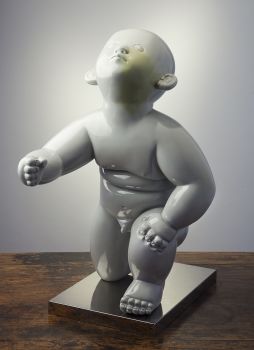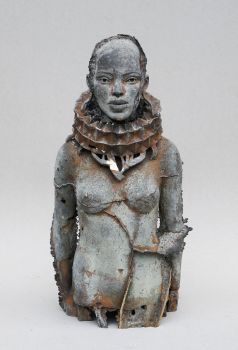Um grande lustre Império de 24 luzes atribuído a Claude Galle 1815
Claude Galle
BronzeCristalMetalGemstone
160 cm, ø 120 cm
ConditionExcellent
Atualmente indisponível via Gallerease
- Sobre arteA large chandelier with 24 lights in two tiers from the French Empire period. The crown at the top of the chandelier is decorated with rosettes on the sides and decorations of alternately stylized palm leaves and lotus leaves. From this crown several rows of cut crystal icicles are hanging down. Forty-eight cords of cut crystal beads run down from the crown and are connected to the main tier.
The main tier, with 16 lights, is decorated with appliques with leaf and fruit motifs. The S-volute shaped arms end in plain shaped candle holders. From the drip trays a double row of crystal almonds and icicles is hanging down. Between every other light, on top of the main tier there are appliques of fruit baskets. The remaining spaces contain another row of eight lights. The dripping trays of these candle holders are decorated with cut crystal in the same manner as the main tier. The lower part of the circle is decorated with two rows of almond shaped crystal beads and 17 rows of crystal icicles. The centre is formed by a faceted crystal ball in a gilt bronze setting decorated with stylized leaf motifs.
A leader in his field, Claude Galle was born at Villepreux near Versailles who moved to Paris to begin an apprenticeship under the fondeur, Pierre Foy. In 1784 Galle married Foy's daughter and on his father-in-law's death in 1788 Galle took over the workshop, which he built up into one the finest of its kind with a workforce of about 400 craftsmen. Galle promptly moved the business to Quai de la Monnaie (renamed Quai de 1'Unité) and from 1805 operated from 60 Rue Vivienne. First listed in the trade registers in 1784 he was received as a maître-fondeur in 1786 and promptly gained the first of many commissions from the Garde-Meuble de la Couronne under Jean Hauré from 1786-88. He is known to have collaborated with Pierre-Philippe Thomire, amongst others, and was responsible for the majority of bronzes d'ameublement supplied during the Empire to Château de Fontainebleau. Other Imperial commissions included the supply of numerous vases, ewers, light fittings, figural clock cases and other fine bronze furnishings for the palaces at Saint-Cloud, the Trianons, Tuileries, Compiègne, Rambouillet and a number of the Italian palaces including Monte Cavallo, Rome and Stupinigi near Turin. Yet despite numerous important commissions Galle was often in debt, partly on account of his lavish life style and also since many of his clients, such as Prince Joseph Napoleon, failed to pay him. After his death Galle's business was reopened and prospered under his son, Gérard-Jean Galle (1788-1846). His work can be found among the world's finest collections including those mentioned above as well as the Musée National de Château de Malmaison, the Musée Marmottan in Paris, the Museo de Relojes at Jerez de la Frontera, the Residenz Munich and the Victoria and Albert Museum in London. - Sobre artistaClaude Galle nasceu em Villepreux, perto de Versalhes. Ele se mudou para Paris para começar um aprendizado com o fondeur Pierre Foy. Em 1784, Galle se casou com a filha de Foy e quando o próprio Foy faleceu em 1788, foi Galle quem assumiu sua oficina e a transformou em uma das melhores de sua espécie, empregando cerca de 400 artesãos. Em 1805, Galle mudou seu negócio para Quai de la Monnaie, e operou a partir de 60 Rue Vivienne. Em 1786 ele já havia se tornado um Maître-Fondeur, e em 1786-1788 ele ganhou a primeira de muitas encomendas da Garde-Meuble de la Couronne, sob Jean Hauré. Ele é conhecido por ter colaborado com Thomire e foi responsável pela maioria dos bronzes d'ameublement fornecidos durante o Império ao Château de Fontainebleau. Suas outras encomendas imperiais incluem o fornecimento de numerosos vasos, jarras, relógios figurais, luminárias, para uma série de outros castelos franceses, bem como palácios italianos. Apesar de sua popularidade, Galle costumava ficar endividado por causa de um estilo de vida luxuoso e do fracasso de muitos de seus clientes em realmente pagá-lo. Após a morte de Galle, sua oficina foi continuada por seu filho, Gérard-Jean Galle (1788-1846). Seu trabalho pode ser encontrado entre as melhores coleções do mundo, como as do Musée National de Château de Malmaison e do Victoria and Albert Museum em Londres.
Artwork details
Categoria
Assuntos]
Estilo
Material e Técnica
Related artworks
Artista Desconhecido
Conjunto de oito desenhos a guache1799 - 1801
Preço em pedidoRobert Schreuder Antiquair
Artista Desconhecido
Pulseira de diamante do século 18 com entalhes de 2.000 anos1790
€ 23.000Adin Fine Antique Jewellery
 Com curadoria de
Com curadoria deDanny Bree
Artista Desconhecido
Set Franse Empire Pendules / Empire Lectura penduleearly 19th
Preço em pedidoKuipers Kunst & Antiek
1 - 4 / 15- 1 - 4 / 24
- 1 - 4 / 10
- 1 - 4 / 24

